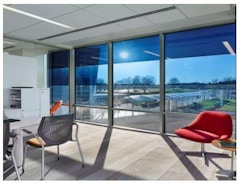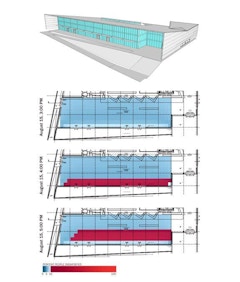
Generative Design Tool
The piezoelectric facade as a self-sustained technology can generate a considerable amount of energy by converting swaying motions (actuated by the

The piezoelectric facade as a self-sustained technology can generate a considerable amount of energy by converting swaying motions (actuated by the

Until recently, Google has occupied buildings that were designed for others and modified the interiors to suit its needs. Many of the improvements



This article discusses design, prototype development and a simulation study of novel types of facade systems, which integrate thermoelectric (TE)

Heat transfer through building facades can occur by any combinations of conduction, convection, and/or radiation. Conductive heat transfer depends on

Over the last two decades, in what has been coined “The Digital Turn”, the introduction of parametric design software has afforded increased


Solar shading devices are required to find a trade-off between conflicting requirements: Protection from excessive solar gains and glare, daylight

Computer simulations of an automated dynamic facade in a passively heated and cooled building by using predictive modeling of short-term future




Access to natural daylight and connection to the outdoor environment is one of the key elements of contemporary architecture. This design concept is


Direct sun on the body is a known potential cause of thermal discomfort for occupants, yet most thermal comfort simulations do not capture its